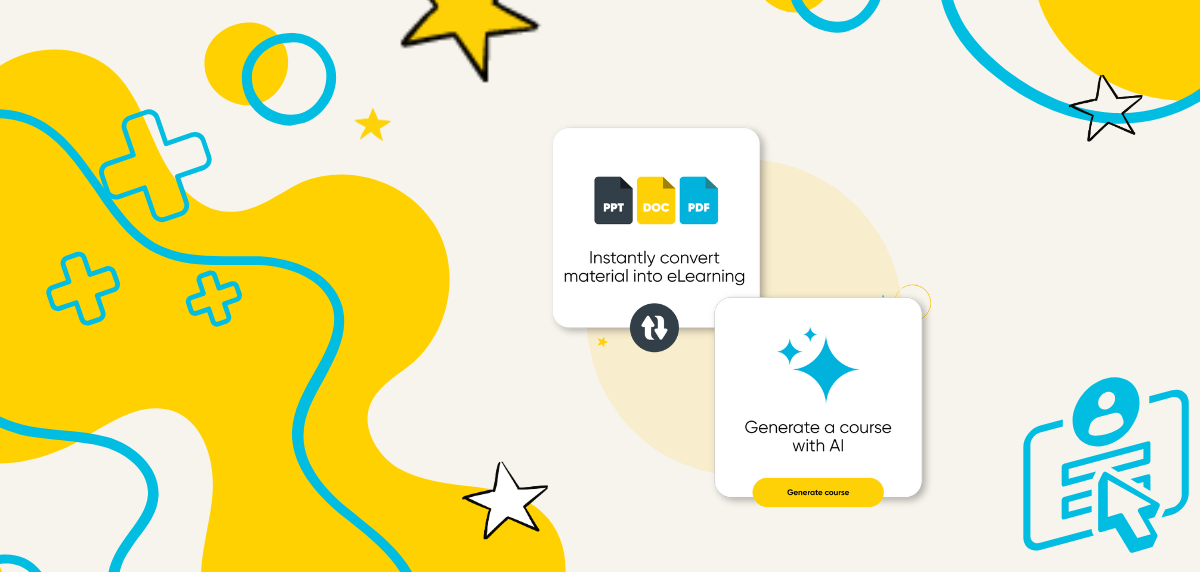Recently updated on July 4th, 2025
AI is changing the way training providers produce content.
Tools now exist that allow you to create courses in a matter of minutes, ideate new ideas, and personalize learning experiences for individuals at scale.
To help you get a sense of some of the different options available, we’ve put together this quick guide on five different AI tools for training content creation that we’ve come across at Arlo.
As with everything AI, things are moving quickly, so expect this list to grow over time.
AI Tools for Training Content Creation
1. Arlo Training Management Software – The Best eLearning Authoring Tool for Training Providers
Number one on our list is our own platform Arlo. Arlo is a solution known as training management software that helps training business streamline the entire training process, from content creation to learner management.
Within Arlo you can create eLearning content at scale with our eLearning authoring tool infused with AI capabilities.
You’ll have three ways to do this:
- Document to Course – Upload and convert existing documents into interactive eLearning content.
- Generate a Course with AI – Enter a description of your course into Arlo’s AI assistant, select your tone, style, fonts, colors, and branding, and watch as your course is created before your eyes.
- Build Your Course from Scratch – Use Arlo’s course and quiz templates to create your course from the ground up.
Here’s how they work:
1. Document to Course
Step 1: Prepare and Upload Your Document
Prepare your word doc, PowerPoint presentations, or PDF and upload it to the interface.
Step 2: Upload Your Document and Choose a Course Style
Once your file is upload, select a course style that aligns with your objectives. Whether you prefer a concise layout, a focus on key information, or a more creative design, you can customize the tone and appearance to suit your needs.
Step 3: Transform Your Document into an Interactive Course
Let Arlo do the heavy lifting as it converts your document into a fully interactive course.
Once the transformation is complete, review the content, adjust layouts, add multimedia, or further customize the course to meet your vision.

Generate a Course with AI
Step 1: Provide Input to Arlo’s AI Assistant
Share the details of what you want your course to cover with Arlo’s AI assistant. The more specific and detailed your input, the more tailored and relevant your course will be.
Step 2: Choose Your Style, Tone, and Theme
Select from a variety of styles, tones, and themes to customize your course. Finish it off by applying one of Arlo’s professionally designed course templates to create a polished, cohesive look.

Step 3: Watch Your Course Come to Life
Arlo will build your course section by section based on your input. As the content comes together, you can review it, make edits, and refine it to ensure it aligns perfectly with your goals.
Build Your Course from Scratch
Step 1: Design and Structure Your Course
Begin by outlining your course using Arlo’s intuitive interface. Organize your content into sections or modules, and add multimedia elements such as videos, downloadable resources, and interactive activities to create a solid foundation.
Step 2: Customize Your Style and Theme
Tailor the appearance of your course to align with your brand and teaching style. Select from a range of templates and themes to create a cohesive, professional look. Adjust colors, fonts, and layouts to reflect your objectives.
Step 3: Add Assessments and Quizzes
Include quizzes and assessments to reinforce key concepts and measure progress. Arlo’s AI assistant can generate quiz questions directly from your course content, helping you save time and ensure alignment with your learning goals.
Step 4: Enhance Engagement with Interactive Features
Incorporate interactive elements like flashcards, infographics, gamified challenges, and practical activities.
Once created you can set up your registration forms, schedule the course to your website as either standalone eLearning course, or as part of a blended course (a course made up of eLearning and live modules either in-person or online) and start taking course bookings right away.

Other important Arlo features to be aware of include:
Real-Time Dashboards – See how every aspect of your training business is performing. Get instant visibility into upcoming courses, registrations, and revenue, and you can easily drill down to take action.
Course and task management – Easily create, schedule, and display various course formats (face-to-face, live-online, blended, eLearning) with templates, supporting one-off, multi-session, and repeat scheduling, streamlined trainer/venue assignment, custom fields, optional extras, and integrated task management including the ability to create tasks, assign them, and set automated reminders, along with calendar views and quick access to key information.
In-depth reporting – Gain data-driven insights with custom reports, creating or selecting from templates to track key metrics (registrations, revenue, instructors, courses, etc.), scheduling automatic delivery to stakeholders, and leveraging integrations or a robust API for enriched business intelligence.
Marketing tools to sell more training – Grow your training business with targeted marketing and sales tools, including smart lists for segmented campaigns, email marketing with activity tracking, automated surveys for feedback, and integrations with platforms like Google Tag Manager, Google Analytics, Meta, SurveyMonkey, and Mailchimp to boost registrations and track ROI.
Next Steps to Take 👇
If you want to see Arlo’s AI training creation tools in action and see how they can be customized to your ways of working, you can book a demo with our friendly team.
They will walk you through the platform and explain how our all-in-one training platform can help you create interactive eLearning courses in minutes and scale your training business.
Get your time back, increase training revenue, and deliver better training with Arlo.
2. Coursebox – An AI Training Tool for Content, Video & More
Coursebox is an AI-powered training platform that combines course authoring tools with learning management system (LMS) functionalities.
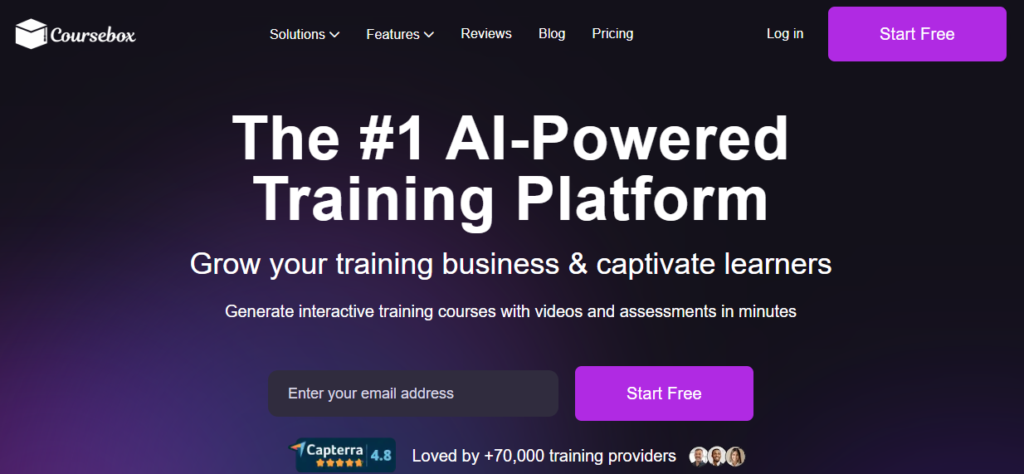
The platform is praised for praised for its user-friendly interface and ease of use, particularly for creating online courses quickly and efficiently.
Users highlight the helpfulness of the AI features, especially for generating course content, quizzes, and videos, which saves significant time and effort.
Key Features for Training Content Creation
Content Conversion: Transforms existing files (videos, documents, websites) into course formats and allows for alignment with competency standards.
AI Video Generation: Creates training videos automatically, reducing the need for traditional video production.
AI Assessment: Provides instant grading and feedback to learners based on defined rubrics, criteria, or answer keys.
AI Chatbot Trainer: Offers real-time conversational assistance to learners through a chatbot trained on the course content.
AI Quiz Generation: Generates quizzes and open-ended questions with answer keys.
Pricing
Coursebox has three plans available:
- Creator – $29.99 per month
- Learning Designer – $99.99 per month
- Branded Training Platform – $299.99 per month.

3. Beautiful.AI – A Great AI Training Content Creation Tool for Interactive Presentations
Beautiful.ai is a presentation software that aims to simplify the creation process and enhance the visual appeal of presentations.
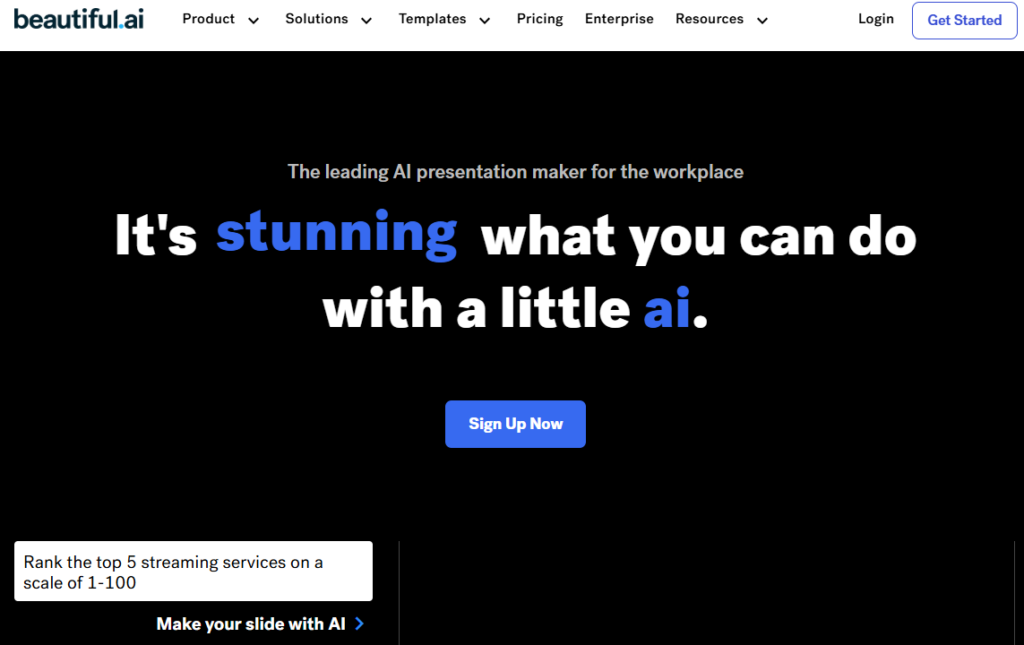
It offers a range of features including smart templates, design automation, and collaboration tools to help users produce professional-looking presentations efficiently. The tools AI features can help with AI image generation, AI slide generation from text, AI writing assistance and more.
The software is positioned as a solution for businesses and individuals seeking to improve their productivity and create impactful presentations.
Key Features for Training Content Creation
AI Presentation Generation: The AI can create entire presentations complete with slides, content, charts, and images based on user descriptions.
Slide Generation from Text: Users can provide text and the AI will generate corresponding slides with relevant content and visuals.
AI Writing Assistance: The AI can assist with various writing tasks, including summarizing, expanding, rewriting in different tones or languages.
AI Image Generation: Users can generate images from text descriptions, specifying style, tone, and mood.
Contextual AI: The AI can analyze documents, PDFs, or webpages to generate presentations that reflect the provided context.
Content Summarization: The AI can summarize lengthy transcripts or documents.
Data Visualization: The AI can help visualize complex data in a clear and engaging way.
Pricing
Beautiful.AI has three plans available:
- Pro – $12/month
- Team – $50/user/month
- Enterprise – available upon request.
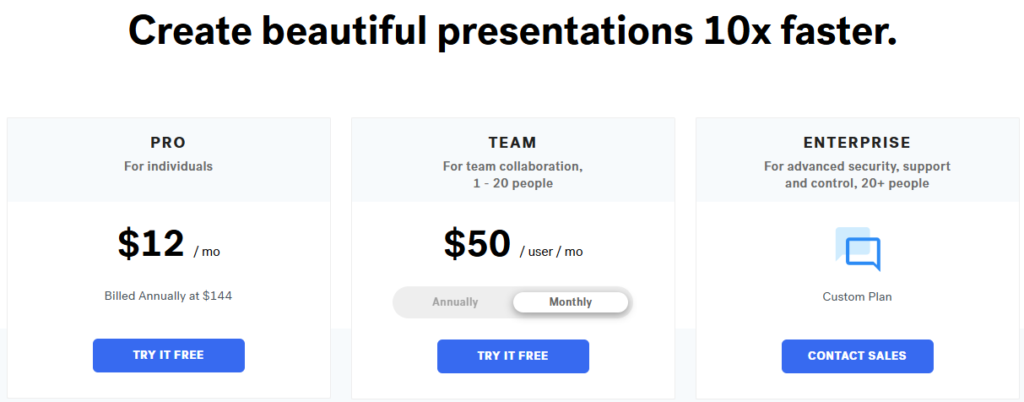
4. ChatGPT – The Best Tool for Training Content Ideation
Arguably the most well known of all AI tools, ChatGPT has a tonne of use cases for training providers. You can use it for content creation, outlining courses, updating training content and much more.
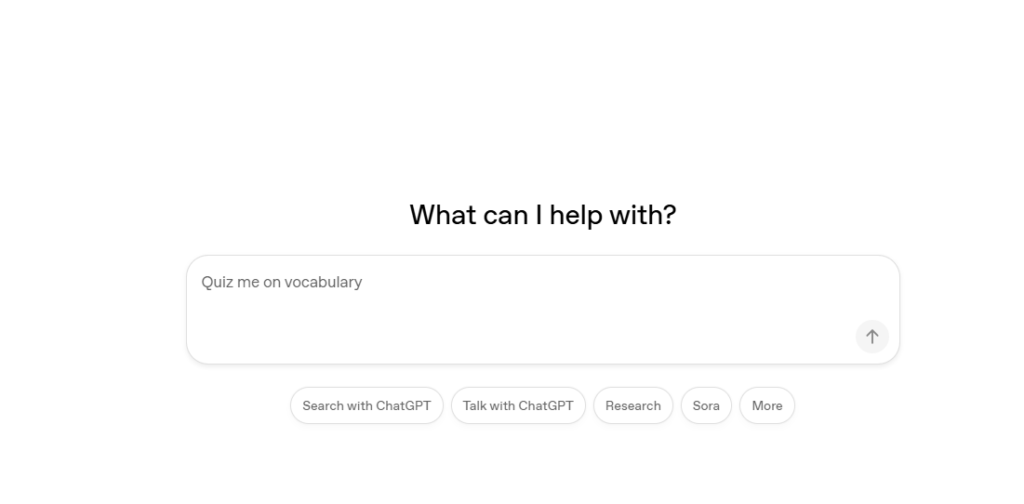
The key to getting the most out of ChatGPT is to get your prompt right:
Be Specific: Instead of asking “Write a course outline,” try “Write a course outline for a beginner’s course on project management, covering Agile methodologies and risk assessment, targeted at people with no prior experience.” The more details you provide, the better the results.
Provide Context: Give ChatGPT background information. For example, “I’m developing a training module for customer service representatives in the telecommunications industry. They need to learn how to handle angry customers and upsell products.”
Use Keywords: Include relevant keywords that you want to see in the output. This helps ChatGPT understand the specific topic and terminology you’re interested in.
Specify the Format: Tell ChatGPT what format you want the output in. For example, “Give me this in a bulleted list,” or “Create a table with two columns: Topic and Time Allotment.”
Iterate and Refine: Don’t expect perfection on the first try. Review the output, and if it’s not quite what you’re looking for, refine your prompt. You can even ask ChatGPT to revise its previous response based on your feedback. For example, “That’s good, but can you make the section on communication skills more detailed?”
Key Features for Training Content Creation
Content Generation (Variety of Formats): Can produce text in various formats useful for training, including:
- Long-form content: Articles, lesson scripts, explanations, etc.
- Short-form content: Summaries, bullet points, key takeaways, quiz questions, etc.
- Structured content: Outlines, tables, lists, etc.
Content Adaptation and Transformation: Can manipulate existing content:
- Summarization: Condensing lengthy material into key points.
- Simplification: Explaining complex topics in easier-to-understand language.
- Rewriting/Paraphrasing: Expressing the same information in different ways.
- Translation (with caveats): Converting text between languages (but human review is essential).
Content Organization and Structuring: Can help organize training material:
- Outline Generation: Creating hierarchical structures for courses or modules.
- Topic Sequencing: Suggesting logical flows for content delivery.
- Chunking: Breaking down large amounts of information into smaller, digestible pieces.
Interactive Content Creation: Can assist with developing interactive elements:
- Quiz and Assessment Generation: Creating multiple-choice, true/false, or other question types.
- Scenario and Case Study Development: Crafting realistic scenarios for learners to analyze.
Pricing
There are five plans available for ChatGPT:
- Free
- Plus – $20/month
- Pro – $200/month
- Team – available upon request
- Enterprise – available upon request.
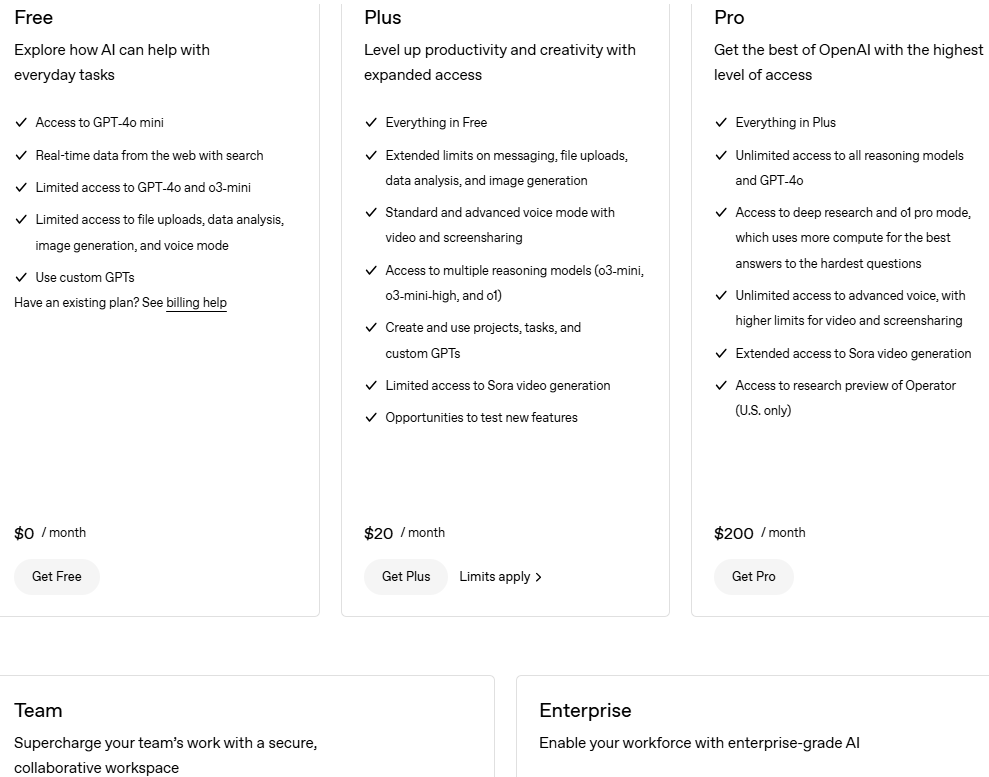
5. Canva – The Best Platform for Straightforward Content Design
Canva is a popular online design tool that empowers users to create a wide range of visual content, even without extensive design experience.

It provides a user-friendly interface, drag-and-drop functionality, and a vast library of templates, images, fonts, and other design elements.
While not solely AI-powered, Canva has been increasingly integrating AI features to simplify the design process and improve creativity.
This makes it a valuable tool for training providers who need visually appealing and engaging materials.
Key Features for Training Content Creation
Canva’s AI-powered features streamline training material creation:
Magic Write: Generates headlines, descriptions, social media captions, and calls to action.
Text to Image: Creates visuals from text descriptions, ideal for visualizing concepts and adding visual interest.
Magic Edit: Modifies images via text prompts, allowing for customization of stock photos and creation of unique visuals.
Background Remover: Cleans up images for professional designs and branded materials.
Brand Kit: Stores brand assets for consistent branding across all training materials.
AI-powered Templates & Design Suggestions: Save time and inspire creativity by recommending relevant layouts and elements.
Pricing
The image shows the following Canva plans available:
For Individuals and Teams:
- Canva Free: Offers basic design tools and features at no cost.
- Canva Pro: Unlocks premium content, more powerful design tools, and AI features. Priced at NZ$20 per month for one person.
- Canva Teams: Designed for teams, offering collaboration features, brand management tools, and workflow simplification. Priced at NZ$15 per month per person, with a minimum of 3 people (NZ$45/month).
For Organizations:
- Canva Enterprise: An all-in-one workplace solution with advanced features for large organizations. Pricing is not listed and requires contacting sales.
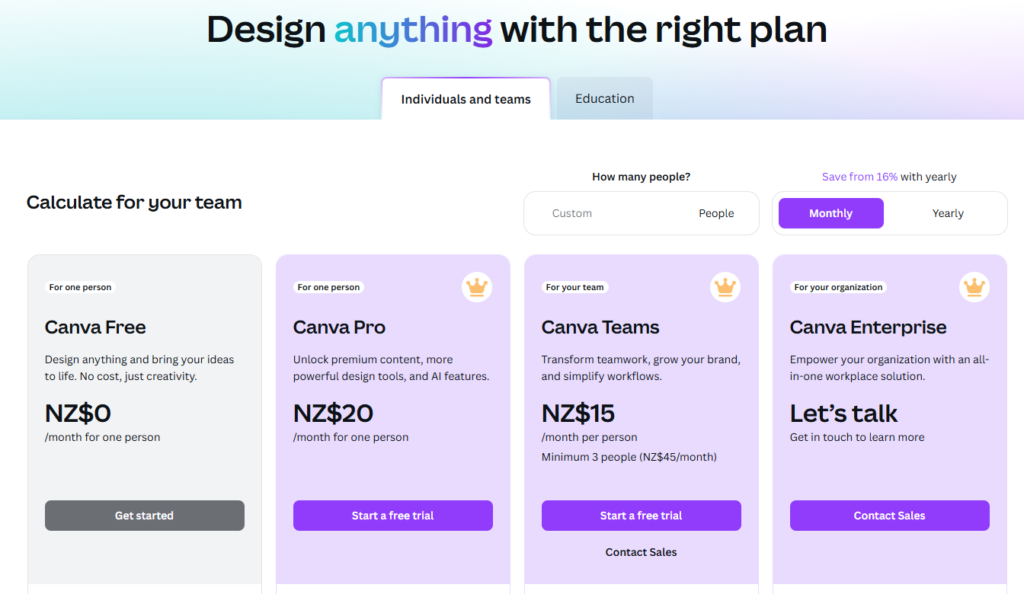
There you have it, five different AI tools you can use to start using to scale your training content production.
The key you’ll find with all of these tools is that they are all useful for speeding up training processes, but they are certainly not replacements for the insights of an experienced trainer or instructional designer.
It’s important to keep this in mind as you experiment with these tools. Think of them as powerful assistants that can handle repetitive tasks, generate initial drafts, and offer creative suggestions.
However, the crucial elements of effective training – understanding your audience, crafting engaging narratives, and making your training relatable all require human expertise.
Looking for a Tool to Help You Create Training Content with AI?
There you have it! 5 great tools to check out if you want to start creating training content with the help of AI!
As noted, Arlo’s AI elearning features enable you to transform your existing training materials into engaging elearning content in seconds, or create a course from a single prompt.
If you want to see these features in action for yourself, you can book a demo with our friendly team below 👇
Get your time back, increase training revenue, and deliver better training with Arlo.
FAQs About AI Tools for Training Content Creation
What exactly are AI tools for training content creation?
AI training tools leverage artificial intelligence, particularly natural language processing (NLP) and machine learning, to assist in various stages of training content development. Such as: generating text, creating visuals, translating content, and even designing interactive learning experiences.
How can AI tools benefit my training content creation process?
Faster Content Creation
AI can handle tedious tasks like image formatting, basic course layout generation, basic video editing and even generating initial drafts of text-based content.
This frees up trainers to focus on what they do best: adding their subject matter expertise, crafting engaging narratives, and tailoring the material to the specific needs of their learners.
The result? Training materials get developed and deployed more quickly.
Lower Development Costs
Think about the time spent resizing images, formatting documents, or creating simple quizzes. AI can automate these time-consuming tasks.
By reducing the hours spent on these manual processes, organizations can potentially lower their training development costs, allowing them to invest those resources in other critical areas like needs analysis, learning experience design, or learner support.
Unified Brand Voice
AI can analyze existing training materials and identify consistent themes, terminology, and style guidelines.
It can then help ensure that new content adheres to these standards, creating a more cohesive and professional learning experience for all participants.
No more inconsistencies in language or branding across different training modules.
More Engaging Learning:
AI can personalize the learning journey. Imagine a system that suggests relevant content based on a learner’s progress or automatically generates practice quizzes targeting their specific knowledge gaps. This type of dynamic, AI-driven learning experience can significantly increase learner engagement and knowledge retention.
Streamlined Content Updates:
Keeping training materials current can be a huge undertaking. AI can help by automatically identifying outdated information, suggesting relevant updates, and even translating content into different languages. This simplifies the process of maintaining accurate and accessible training resources.
Fresh Content Ideas:
Sometimes, trainers get stuck in a rut. AI can analyze existing training content and suggest related topics, offer alternative ways to explain complex concepts, or even generate different visual representations of the information.
This can spark new ideas and help trainers approach their content from a fresh perspective.
Are AI content creation tools going to replace instructional designers?
No. AI tools are designed to augment the work of instructional designers and facilitators, not replace them.
Human expertise is essential for understanding learning objectives, designing effective pedagogical strategies, and ensuring the quality and accuracy of training content.
AI excels at assisting with specific tasks, freeing up instructional designers to focus on higher-level strategic work.
What types of training content can AI tools help create?
AI tools can be used for a wide range of training content, including:
- Text-based materials (e.g., manuals, scripts, summaries)
- Visual aids (e.g., infographics, presentations, videos)
- Interactive exercises and quizzes
- Simulations and scenarios
- Personalized learning paths
- Videos with AI video tools
What are the limitations of AI tools for training content creation:
Accuracy and Bias
AI models are trained on data, and if that data contains biases or inaccuracies, the AI’s output may reflect those flaws. Careful review and editing are always necessary.
Contextual Understanding
AI may struggle with nuanced language, complex concepts, or specific industry jargon. Human oversight is essential to ensure clarity and accuracy.
Creativity and Innovation
While AI can generate creative suggestions, true innovation often requires human intuition and understanding of the target audience.
Ethical Considerations
Issues like copyright, data privacy, all need to be carefully considered when using AI tools.
